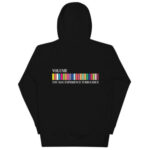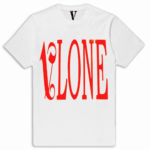Medical books have historically been the bedrock of healthcare education, serving not only as comprehensive guides for aspiring physicians and healthcare professionals but also as critical resources for seasoned practitioners. The evolution of medical literature reflects the ongoing advancements in medical science and the changing landscape of healthcare. From ancient manuscripts to contemporary digital textbooks, medical books encapsulate a wealth of knowledge that shapes the practice of medicine and informs clinical decision-making. This article explores the multifaceted significance of medical books, their historical context, their role in modern medical education, and their future in an increasingly digital world.
A Historical Overview: The Journey of Medical Literature
The journey of medical literature dates back to ancient civilizations, where knowledge was painstakingly recorded on clay tablets, papyrus scrolls, and parchment. The Ebers Papyrus, an ancient Egyptian medical document from around 1550 BCE, illustrates the early attempts to codify medical knowledge, including treatments for various ailments. Ancient Greek texts, particularly those attributed to Hippocrates, laid the groundwork for a more systematic approach to medicine, emphasizing clinical observation and ethical practice.
The Middle Ages saw the translation of these classical texts into Arabic, fostering a rich tradition of scholarship in the Islamic world. Physicians like Avicenna authored seminal works, including The Canon of Medicine, which became foundational texts in both the Islamic and European medical traditions. The advent of the printing press in the 15th century marked a turning point in the dissemination of medical knowledge. Texts could be reproduced en masse, allowing for wider access and promoting the spread of medical ideas across Europe. Noteworthy publications, such as Andreas Vesalius’s De Humani Corporis Fabrica, revolutionized the study of anatomy and challenged prevailing misconceptions.
The Structure and Content of Medical Textbooks
Medical textbooks are meticulously structured to provide a comprehensive overview of specific subjects. They typically encompass a range of components, including foundational sciences, clinical guidelines, and case studies. This organization facilitates a systematic approach to learning, enabling students to build on their knowledge progressively.
1. Foundational Sciences
Medical textbooks often begin with foundational sciences such as anatomy, physiology, and biochemistry. Understanding these core subjects is essential for grasping more complex medical concepts. For instance, a solid grounding in anatomy allows students to comprehend the intricacies of surgical procedures and the pathology of diseases. Textbooks in these areas are typically richly illustrated, employing diagrams, photographs, and 3D models to enhance understanding.
2. Clinical Practice
Following the foundational sciences, medical textbooks delve into clinical practice, covering a range of specialties such as internal medicine, surgery, pediatrics, and psychiatry. Each chapter typically includes diagnostic criteria, treatment protocols, and evidence-based practices, providing a thorough understanding of each specialty. These sections are often complemented by clinical case studies that illustrate the application of theoretical knowledge in real-world scenarios, allowing students to connect the dots between learning and practice.
3. Evidence-Based Medicine
In recent years, there has been a significant shift towards incorporating evidence-based medicine into medical textbooks. This approach emphasizes the integration of clinical expertise, patient values, and the best available evidence in decision-making. Textbooks that adhere to this model not only summarize current research findings but also guide practitioners on how to apply these findings in clinical settings. This focus on evidence-based practice ensures that healthcare professionals are equipped with the latest information and methodologies, ultimately improving patient outcomes.
The Impact of Medical Books on Education and Training
Medical education relies heavily on textbooks as primary sources of information. Their impact on the training of healthcare professionals cannot be overstated. They serve as essential tools for learning, reference, and ongoing professional development.
1. Structured Learning Pathways
Medical textbooks provide a structured learning pathway for students. Unlike other forms of information dissemination, such as lectures or online articles, textbooks offer a cohesive narrative that guides learners through complex subjects. This structure is particularly beneficial in medical education, where students must grasp intricate and often interrelated concepts. Textbooks enable students to develop a comprehensive understanding of medical science, laying the groundwork for their future clinical practice.
2. Encouraging Critical Thinking
Medical textbooks foster critical thinking by presenting case studies, clinical dilemmas, and questions for reflection. This approach encourages students to engage with the material actively, developing their analytical skills and promoting a deeper understanding of clinical practice. By challenging students to think critically about various scenarios, textbooks prepare them to make informed decisions in real-world situations, an essential skill for any healthcare professional.
3. Ongoing Reference for Practitioners
For established healthcare professionals, medical textbooks serve as invaluable references. As medicine evolves, practitioners must stay informed about the latest guidelines, treatment protocols, and emerging research. Textbooks provide a reliable source of information, offering a consolidated overview of a specialty or topic. The ability to consult these texts ensures that practitioners can deliver evidence-based care and stay current in their fields, ultimately benefiting their patients.
The Digital Transformation of Medical Literature
In recent years, the digital transformation of medical literature has reshaped how healthcare professionals access and engage with information. The rise of electronic textbooks, online journals, and medical databases has revolutionized the landscape of medical literature, offering new opportunities and challenges.
1. Accessibility and Convenience
Digital medical resources provide unparalleled accessibility. Healthcare professionals can access a vast library of information at their fingertips, allowing them to stay informed about the latest research and guidelines without the limitations of traditional print books. This convenience is particularly beneficial in clinical settings, where time is of the essence. With digital platforms, practitioners can quickly search for specific topics, access articles, and find evidence-based guidelines, enhancing their ability to deliver timely and informed care.
2. Interactive Learning Experiences
Many digital medical resources offer interactive features that enhance the learning experience. Online textbooks and platforms often include quizzes, case simulations, and video tutorials, allowing users to engage with the material actively. This interactivity promotes a more immersive learning environment, catering to various learning styles and enhancing knowledge retention. Furthermore, these resources can be updated frequently, ensuring that healthcare professionals have access to the latest information and developments in their fields.
3. Challenges of Digital Information
Despite the advantages of digital resources, challenges remain. The sheer volume of information available online can be overwhelming, making it difficult for practitioners to discern credible sources from unreliable ones. The risk of misinformation is a significant concern, as healthcare professionals must rely on accurate data to make informed clinical decisions. Furthermore, the reliance on digital formats may lead to a diminished appreciation for traditional print books, which often provide comprehensive and thoughtfully curated content.
The Future of Medical Books: A Hybrid Approach
As we look toward the future, the landscape of medical literature is likely to evolve into a hybrid model, combining the strengths of both print and digital formats. While digital resources offer immediate access and interactive features, print books continue to hold unique advantages that are invaluable in medical education and practice.
1. Preservation of Knowledge
Print books possess a tangible quality that many readers value. They do not require electronic devices or internet connections, making them reliable resources, especially in low-tech environments. The physical act of reading a book can enhance retention and comprehension, as studies suggest that readers engage more deeply with printed material. In a field where the foundation of knowledge is crucial, the enduring appeal of print textbooks remains significant.
2. Integration of Formats
The future may witness a seamless integration of print and digital formats. For example, medical textbooks could include QR codes linking to supplementary online resources, allowing readers to access additional content while maintaining the traditional structure of print. This integration would cater to diverse learning preferences and ensure a well-rounded educational experience. Additionally, hybrid textbooks that combine the advantages of both formats could provide a more comprehensive approach to medical education.
3. Focus on Specialized Knowledge
As medicine continues to advance, the demand for specialized knowledge will grow. Medical books will likely evolve to cater to niche areas, providing in-depth coverage of emerging fields such as telemedicine, genomics, and personalized medicine. Textbooks that focus on these specialties will be crucial for training the next generation of healthcare professionals, ensuring they are equipped to navigate the complexities of modern medicine.
The Enduring Legacy of Medical Books
Medical books have played a vital role in the development of medical knowledge and practice throughout history. They serve as educational tools, sources of evidence-based guidelines, and repositories of collective wisdom. As technology continues to evolve, the way we access and engage with medical literature will change, but the fundamental importance of these texts will remain.
In an era where information is at our fingertips, the challenge will be to balance the convenience of digital resources with the depth and rigor of traditional medical textbooks. The future of medical literature is bright, with opportunities for innovation and collaboration that will enhance education and improve patient care. As we navigate this dynamic landscape, we must recognize and celebrate the enduring legacy of medical books—guardians of knowledge that have shaped the practice of medicine for centuries and will continue to do so in the years to come.
Read More: Mix and Match: How to Pair Your Denim Co-ord Pieces with Other Outfits



